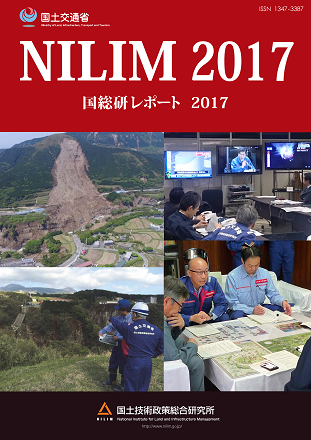2017 Annual Report of NILIM

| Message of Director-General |
| Technical Policy for Synergistic Application of Innovation to Stock |
| Opening report |
| Messages from Departments and Centers of NILIM |
| 1. Disaster prevention and disaster mitigation, and crisis management |
| 2. Infrastructure maintenance |
| 3. Productivity revolution (i-Construction, Intelligent utilization, Livability improvement) |
| 4. Dispatch of experts to disaster sites and technical support activities |
| 5. Technical consultation and technical support |
| 6. International Research Activities |